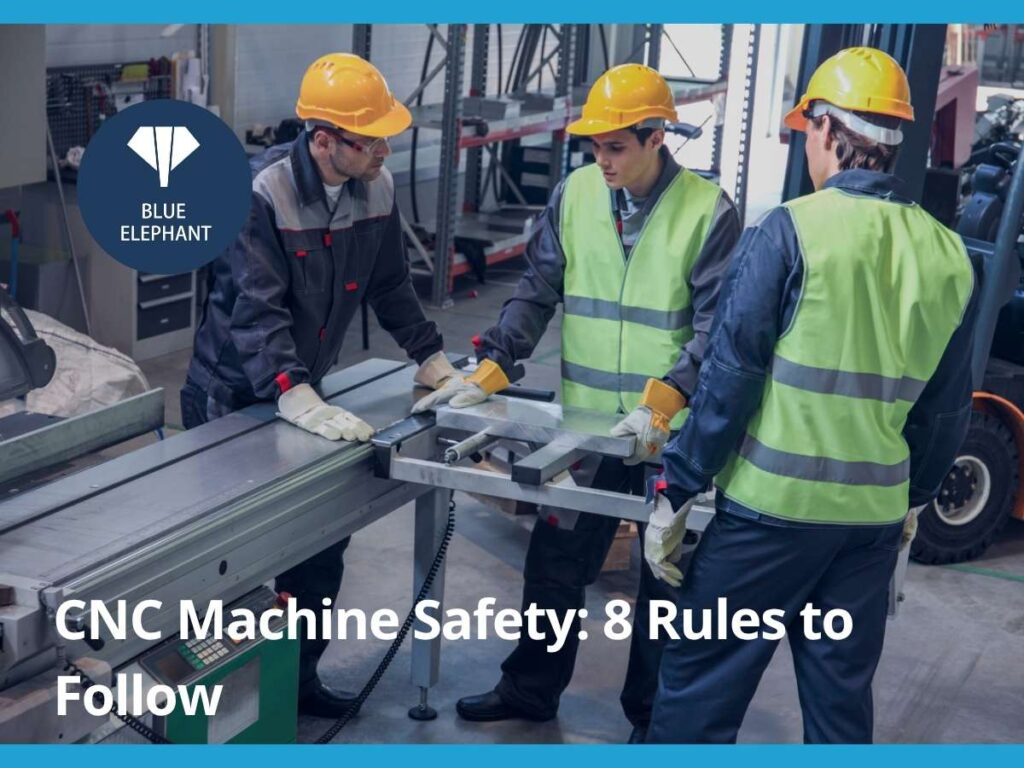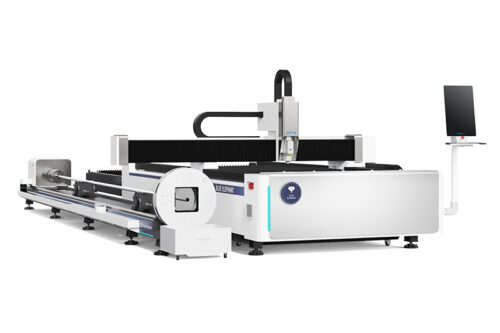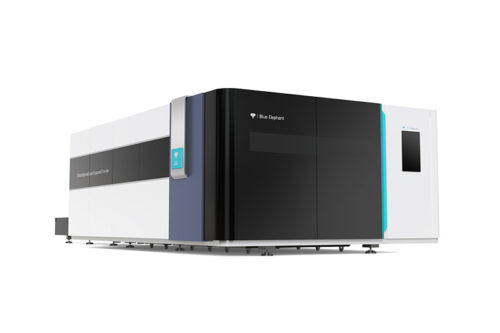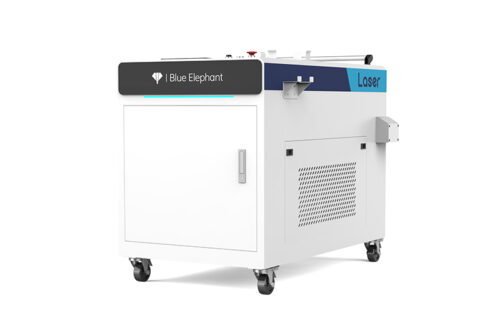I’ll never forget the day I saw a CNC machine jam up because someone skipped a basic safety check. Sparks flew, the spindle stalled, and the entire production line came to a halt.
That single mistake cost the company hours of downtime and thousands of dollars in lost revenue.
These kinds of accidents are more common than you’d think—and they’re completely avoidable. Safety isn’t just about compliance; it’s about protecting workers, machinery, and productivity.
With years of experience in CNC operations and safety training, I’ve seen firsthand what happens when safety protocols are ignored.
The insights in this article come from real-world application, industry best practices, and expert recommendations.
Here’s what you’ll learn:
- The top 8 CNC safety rules to prevent accidents and downtime
- How to create a safer, more efficient work environment
- Practical tips your team can implement immediately
A single safety mistake can cost you more than you think.
So, let’s get started!
1. Personal Protective Equipment (PPE)
Let me tell you something I learned early in my career—complacency in a machine shop is a ticking time bomb. I once watched a skilled CNC operator, someone who had been in the game for years, take a flying metal chip to the eye. No safety glasses. No second chances. He was out for weeks, and the company took a hit.
That’s why PPE isn’t optional—it’s your frontline defense.
When you step onto the shop floor, you’re stepping into a high-risk zone. Spinning tools, flying debris, intense noise—these aren’t just hazards; they’re accidents waiting to happen if you’re not protected.
What You Need
You wouldn’t send your best machine into production with worn-out parts, so why would you put your operators at risk? Here’s what your team should be wearing every single shift:
- Safety Glasses or Face Shields: Metal chips don’t care about experience. They move fast, and they hit hard. Protect your eyes or risk losing them.
- Hearing Protection: CNC machines don’t whisper. The constant noise exposure can damage hearing permanently—earplugs or earmuffs should be standard.
- Cut-Resistant Gloves: Handling sharp edges? A single slip can mean deep cuts or worse. But let’s be clear—never wear gloves when operating rotating tools.
- Steel-Toe Boots: Dropped tools, heavy workpieces—your feet are always at risk. Protect them. No one wins when a fractured toe takes a skilled machinist out of commission.
Common PPE Mistakes
It’s not just about having PPE—it’s about using it correctly. Here’s where companies get it wrong:
- Using Cheap, Low-Quality Gear: Safety equipment isn’t the place to cut costs. Low-quality PPE fails when it matters most. Invest in durable, certified protection.
- Ignoring Proper Fit: Loose safety glasses, oversized gloves, or uncomfortable ear protection lead to one thing: workers not wearing them at all. Fit matters.
- Not Replacing Worn-Out PPE: A scratched-up face shield? Torn gloves? PPE has a lifespan. If it’s compromised, it won’t protect when needed.
If you see any of these happening on your shop floor, fix it now. The cost of an injury is far higher than the cost of proper PPE.
Enforce PPE Compliance
You know safety matters—but do your employees? Resistance to PPE is common, and let’s be honest, if leadership doesn’t enforce it, no one will take it seriously. Here’s how you make PPE compliance second nature in your shop:
- Lead by Example: If managers and supervisors skip PPE, expect the team to do the same. Set the standard.
- Make PPE Readily Available: No one should have to hunt for safety glasses or earplugs. Keep PPE stocked, accessible, and in good condition.
- Implement a Zero-Tolerance Policy: No PPE, no work. Period. Make it clear that skipping safety gear won’t be ignored.
- Regularly Train & Remind Your Team: Safety reminders shouldn’t just happen after an accident. Reinforce PPE use with regular toolbox talks.
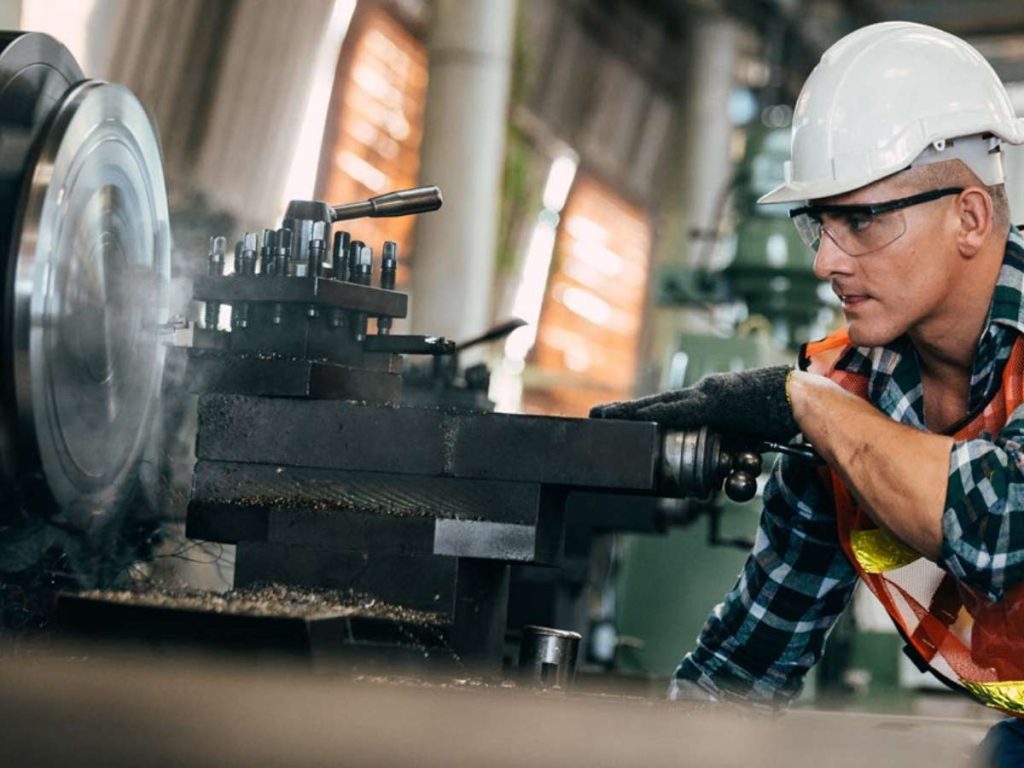
2. Machine-Specific Training & Certification
Operating a CNC machine isn’t just about pushing buttons. Precision, efficiency, and safety all depend on skilled operators who know their machines inside and out. Without proper training, even the most advanced equipment becomes a liability—risking damage, injuries, and costly downtime.
A well-trained operator is an asset. An untrained one? A ticking time bomb.
Why Training Matters
CNC machines are complex. Every machine type from Blue Elephant, whether milling, turning, or laser cutting—requires specialized knowledge to operate safely and efficiently. Here’s why training isn’t optional:
- Prevents Costly Mistakes: A single programming error can ruin materials, break tools, or even damage the machine itself.
- Reduces Safety Risks: Incorrect operation can lead to serious injuries or machine failures.
- Increases Productivity: Skilled operators work faster and with fewer errors, improving overall efficiency.
- Extends Machine Lifespan: Proper handling reduces wear and tear, ensuring your investment lasts longer.
Training for Operator
A one-time training session isn’t enough. Continuous learning keeps operators sharp and machines running smoothly. Every CNC operator should master the following:
- Machine-Specific Operation: At Blue Elephant, we offer CNC machines that have unique controls and programming requirements. Operators must understand every function before running production.
- Tooling Knowledge: Selecting the right tool, maintaining cutting edges, and understanding speeds and feeds directly impact safety and part quality.
- Material Handling: Different materials react differently under machining. Understanding material properties prevents tool breakage and machining errors.
- Emergency Response: Every operator should know exactly what to do in case of a tool crash, machine malfunction, or power failure.
- Software & Programming: Mistakes in G-code or CAD/CAM software can lead to catastrophic errors. Operators must verify and simulate programs before execution.
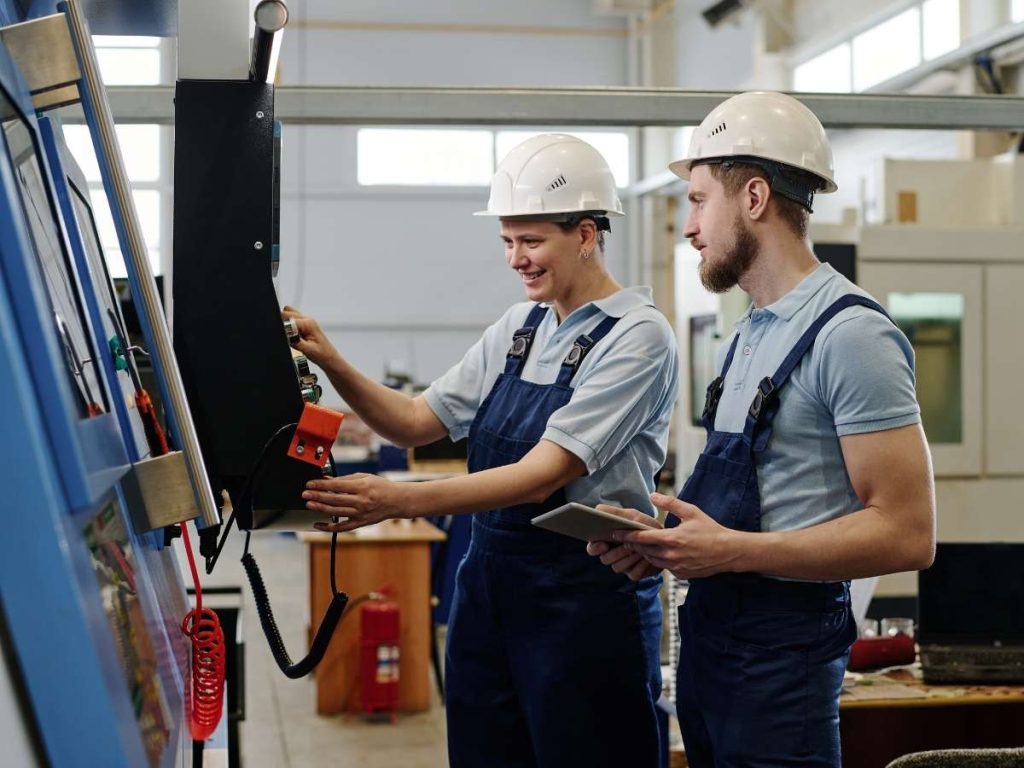
Certification
Training alone isn’t enough—certification ensures that operators meet industry and safety standards. A certified CNC operator isn’t just trained; they’re verified to have the skills and knowledge needed to run machines safely and efficiently. Why certification matters:
- Standardized Knowledge: Ensures all operators follow the same safety and operational guidelines.
- Reduces Liability: Certified employees lower the risk of accidents and legal issues.
- Boosts Workforce Competence: A certified team means fewer errors, less downtime, and more consistent production quality.
Look for nationally or industry-recognized certifications from organizations like:
- National Institute for Metalworking Skills (NIMS)
- Manufacturing Skill Standards Council (MSSC)
- Haas CNC Certification Programs
3. Pre-Operational Safety Checks
A CNC machine is only as safe as the operator who runs it. Skipping safety checks is like driving a car without brakes—sooner or later, disaster strikes. Every time a machine starts, it should be 100% ready for operation.
No missing parts. No loose bolts. No unnoticed hazards.
Pre-operational safety checks aren’t just a formality—they’re the difference between smooth production and catastrophic failure.
Benefits
CNC machines operate at extreme speed and precision. Even a minor issue, a loose tool, a worn-out wire, or a misaligned workpiece, can trigger serious damage. Here’s why these checks must be done before every shift:
- Prevents Costly Breakdowns: Catching small issues early stops them from turning into expensive repairs.
- Reduces Injury Risk: A faulty machine is a workplace hazard. Proper checks protect operators from accidents.
- Ensures Quality & Precision: Even the smallest mechanical issue can affect accuracy. A properly inspected machine delivers better results.
- Minimizes Downtime: Unexpected failures cause production delays. Proactive checks keep the workflow uninterrupted.
Step-by-Step CNC Pre-Operational Checklist
Before powering up the machine, every operator should go through a strict safety checklist. Here’s what needs to be checked every single time:
- Machine Components:
- Inspect for loose bolts, worn belts, and damaged cables.
- Ensure lubrication systems are functioning properly.
- Verify tool holders and spindles are clean and secure.
- Work Area & Workspace:
- Remove any unnecessary objects from around the machine.
- Ensure proper lighting and ventilation.
- Keep emergency exits and safety equipment easily accessible.
- Workpiece & Tooling:
- Securely fasten the workpiece to prevent movement during machining.
- Confirm the correct cutting tool is installed and in good condition.
- Double-check tool offsets and measurements to avoid programming errors.
- Safety Shields & Emergency Features:
- Ensure all machine guards and enclosures are in place.
- Test emergency stop buttons—they must work instantly.
- Verify that all interlocks and safety sensors are active.
4. Correct Handling of Workpieces & Cutting Tools
CNC machines are built for precision, but even the most advanced technology can’t compensate for improper handling. If a workpiece isn’t secured correctly or a cutting tool is installed improperly, you’re one cycle away from a disaster—broken tools, machine damage, or even serious injuries.
Every operator must understand how to handle, mount, and maintain workpieces and tools with absolute precision. Because in CNC machining, one mistake can cost thousands.
Importance
A CNC machine only works as well as its setup. Workpieces and tools that aren’t handled correctly lead to:
- Inconsistent Part Quality: Loose or misaligned workpieces result in inaccuracies, scrap, and lost time.
- Tool Breakage & Machine Damage: Improper tool installation causes excessive wear, chipping, or catastrophic failure.
- Increased Safety Risks: A workpiece that shifts mid-operation can become a projectile—endangering the operator and damaging the machine.
- Unplanned Downtime & Delays: Fixing a poorly mounted part or broken tool stalls production and kills efficiency.
Workpiece Handling
Before the first cut, the workpiece must be locked in place. Even the slightest movement compromises accuracy and safety. Follow these best practices to secure workpieces the right way:
- Choose the Right Workholding Device: Use vises, chucks, clamps, or vacuum tables depending on the material and operation.
- Check for Proper Alignment: The workpiece must sit flush against the fixture, no gaps, no misalignment.
- Tighten to the Correct Torque: Over-tightening can deform the part; under-tightening can cause movement. Follow the manufacturer’s clamping force recommendations.
- Inspect for Debris: Chips, dust, and residues weaken the grip, clean the fixture and workpiece before securing.
- Test Stability Before Machining: Give the workpiece a firm nudge, if it moves, it’s not ready.
Cutting Tool Installation
A tool that isn’t installed correctly won’t just fail—it will take your productivity down with it. Follow these critical steps for safe and efficient tool handling:
- Inspect Before Installation: Check for chips, cracks, or dull edges. A damaged tool will fail under load.
- Use the Right Tool Holder: Ensure the tool fits securely in the collet, chuck, or spindle, with no play, no movement.
- Set the Correct Tool Length: Excessive overhang increases vibration and decreases precision.
- Tighten to Manufacturer Specs: Over-tightening can crack the tool holder, while under-tightening causes tool slippage.
- Balance High-Speed Tools: Unbalanced tools cause machine vibrations, poor surface finishes, and premature wear.
Cost of Ignoring Proper Handling
Cutting corners on setup always comes back to bite you. Here’s what happens when workpieces and tools aren’t handled correctly:
- A misaligned workpiece ruins an entire batch, forcing costly rework.
- A loose tool flies out of the spindle at 10,000 RPM, damaging the machine and endangering employees.
- An over-tightened clamp deforms a thin-walled part, making precision impossible.
- A chipped tool shatters mid-operation, stalling production and leading to expensive downtime.
5. Emergency Stop Procedures & Safety Protocols
CNC machines are built for precision, but when something goes wrong, every second counts. A tool crash, a jammed spindle, a fire—these situations escalate fast. If your operators don’t know exactly what to do, they’re putting themselves, the machine, and your entire operation at risk.
That’s why emergency stop procedures and safety protocols aren’t suggestions—they’re lifesaving rules.
Importance
CNC machines don’t hesitate. They don’t pause. They will keep running—until someone stops them. Without an immediate response, small malfunctions can turn into major disasters. Here’s what’s at stake when E-stop procedures aren’t followed:
- Severe Operator Injury: A malfunctioning tool or spinning chuck can cause serious harm in seconds.
- Expensive Machine Damage: A CNC crash can destroy spindles, break tools, and cost thousands in repairs.
- Production Downtime: Every second wasted in an emergency translates to lost time, missed deadlines, and financial losses.
- Fire & Electrical Hazards: Coolant leaks, overheating, or short circuits can trigger dangerous fires if not handled immediately.
Emergency Stop
Every CNC machine is equipped with an Emergency Stop (E-stop) button. But knowing where it is isn’t enough. Every operator must know exactly when and how to use it. Here’s how to properly execute an E-stop:
- Immediately hit the E-stop button at the first sign of a machine failure, tool breakage, or operator risk.
- Stay clear of the machine—moving parts may take a few seconds to stop completely.
- Shut down the machine power if there’s smoke, fire, or a major malfunction.
- Alert the supervisor or safety officer immediately.
- Lockout the machine if necessary to prevent accidental restart before a full inspection.
What to Do AFTER an Emergency Stop
Stopping the machine is just the first step. What happens next determines how quickly your operation recovers.
- Assess the Situation: Identify what caused the failure, was it a broken tool, a misalignment, or an electrical issue?
- Inspect the Machine: Look for visible damage to the spindle, tooling, and workpiece. Never restart the machine blindly.
- Reset the Machine Properly: Only a qualified operator or technician should restart operations after verifying safety.
- Document the Incident: Log the event in a maintenance report to prevent repeat failures.
6. Proper Ventilation & Clean Workspaces
CNC machines don’t just shape metal and materials, they create heat, dust, fumes, and airborne particles that can quickly turn a workspace into a hazardous environment. Without proper ventilation and cleanliness, you’re not just compromising productivity—you’re risking health, safety, and equipment longevity.
A well-ventilated, clean workspace isn’t just a nice-to-have—it’s a necessity.
Ventilation
CNC machines generate heat, fumes, and airborne contaminants. Without proper ventilation, these pollutants linger in the air, creating an unsafe work environment. Here’s how to ensure your facility has the airflow it needs:
- Install Local Exhaust Ventilation (LEV): Position extraction systems near machines to capture fumes, dust, and mist at the source.
- Use High-Quality Air Filtration Systems: HEPA and activated carbon filters remove harmful particles before they spread.
- Ensure Proper Air Circulation: Industrial fans and HVAC systems keep fresh air flowing and prevent stagnant air buildup.
- Monitor Air Quality Regularly: Conduct routine checks to measure dust, fume, and VOC (volatile organic compound) levels.
- Maintain & Replace Filters on Schedule: A clogged air filter is as bad as having no ventilation at all.
Clean Workspaces
A dirty, cluttered shop is a breeding ground for accidents, inefficiencies, and machine failures. Keeping workstations, floors, and machinery clean isn’t just about aesthetics—it’s about safety and performance. Follow these best practices for maintaining a spotless shop:
- Keep Workbenches & Tooling Areas Organized: Every tool should have a designated place—no loose parts, no clutter.
- Regularly Remove Metal Chips & Debris: Chips can be sharp, hot, and hazardous. Use chip conveyors, vacuums, and proper disposal bins.
- Clean Machine Interiors & Exteriors Daily: Built-up dust and oil affect performance, wipe down surfaces and clear coolant drains.
- Ensure Proper Coolant Management: Old, contaminated coolant produces bacteria and odors, regularly check levels and replace as needed.
- Prevent Slips & Falls: Spilled coolant and oil create hazards, use absorbent mats and clean up spills immediately.
The Consequences of Ignoring Cleanliness & Ventilation
If your facility lacks proper air circulation and routine cleaning, you’re setting yourself up for problems that go beyond inconvenience. Here’s what happens when cleanliness and ventilation are ignored:
- Operators develop respiratory problems from inhaling airborne particles.
- Machines overheat and break down due to clogged vents and poor airflow.
- Fire risks increase with dust accumulation near electrical components.
- Part quality suffers from debris contamination affecting precision.
- Workplace injuries rise due to slippery floors and tripping hazards.
7. Safe Programming & Machine Operation
CNC machines are built for precision, efficiency, and repeatability—but only when they’re programmed and operated correctly. One wrong code, one overlooked setting, or one distracted operator can result in tool breakage, machine crashes, production delays, and even serious injuries.
Safe programming and machine operation aren’t just about efficiency—they’re about protecting your equipment, your workers, and your bottom line.
Importance
CNC programming isn’t just about getting a machine to cut—it’s about ensuring every movement is intentional, controlled, and safe. A single mistake in G-code or toolpath planning can have costly consequences. Here’s why safe programming and machine operation must be a priority:
- Prevents Costly Errors: Incorrect toolpaths or settings can scrap expensive materials, break tools, or damage the machine itself.
- Protects Operator Safety: A misprogrammed spindle speed or incorrect rapid movement can turn the machine into a dangerous hazard.
- Maintains Machine Longevity: Overloading tools, skipping warm-ups, or ignoring recommended feeds and speeds accelerates wear and tear.
- Ensures Part Accuracy: Proper programming eliminates wasted time and material due to incorrect dimensions or tolerances.
Safe CNC Programming
Programming a CNC machine isn’t just about speed—it’s about precision. Every operator and programmer must follow strict protocols to prevent costly mistakes.
- Double-Check G-Code Before Running: A simple typo can lead to a tool plunging into material at full speed. Always review code line by line.
- Simulate Toolpaths Before Cutting: Use CAM software simulations to catch errors before they happen on the machine.
- Set Correct Speeds & Feeds: Running too fast causes tool wear; running too slow wastes time and reduces efficiency.
- Use Proper Tool Offsets & Work Coordinate Systems: Incorrect offsets lead to misalignment, scrapped parts, and potential tool crashes.
- Avoid Rapid Movements in Tight Spaces: High-speed movements can cause collisions between tools, workpieces, and machine components.
- Enable Limit Switches & Soft Stops: These safety features prevent machine overtravel and hard crashes.
Safe CNC Machine Operation
Even the best CNC program means nothing if the operator isn’t following safe operating procedures. Every shift should follow strict safety protocols to ensure smooth, incident-free machining.
- Perform Pre-Operational Safety Checks: Inspect the machine, tools, and workpiece before pressing start.
- Secure Workpieces & Tools Properly: Loose parts can become dangerous projectiles.
- Keep Hands Away from Moving Parts: Never reach into a running CNC machine, it only takes a second for an accident to happen.
- Monitor the First Run Closely: The first cycle of a new program must be supervised in case adjustments are needed.
- Never Leave a Machine Running Unattended: If something goes wrong, an operator needs to be there to stop it immediately.
- Follow Lockout/Tagout (LOTO) Procedures: When performing maintenance, ensure the machine is completely powered down.
8. Electrical & Fire Safety Measures
CNC machines are power-hungry workhorses, running on high-voltage electricity, complex wiring, and industrial-grade motors. But with great power comes great risk. A single electrical failure can lead to machine breakdowns, fires, or worse—serious injuries.
Ignoring electrical and fire safety isn’t an option. If your facility isn’t prepared, you’re one spark away from a disaster.
Importance
CNC machines generate intense heat, friction, and electrical loads during operation. Without proper safety measures, your entire shop is at risk. Here’s why electrical and fire safety must be a top priority:
- Prevents Electrical Failures: Faulty wiring, overloaded circuits, and poor grounding can lead to machine failures or unexpected shutdowns.
- Reduces Fire Hazards: Sparks from electrical shorts, overheating motors, or coolant mist can ignite fires within seconds.
- Protects Operators from Electrocution: Direct contact with exposed wires or malfunctioning electrical panels can be deadly.
- Avoids Costly Downtime & Machine Damage: Electrical issues don’t just stop production—they can destroy expensive equipment.
Electrical Safety
CNC machines run on high-voltage power supplies that must be handled with extreme care. One mistake can cause a power surge, short circuit, or electrocution. Follow these critical electrical safety measures:
- Ensure Proper Grounding: Every CNC machine must be properly grounded to prevent electrical surges and shocks.
- Inspect Cables & Wiring Regularly: Look for frayed, damaged, or exposed wires—these are fire hazards waiting to happen.
- Never Overload Circuits: Plugging multiple high-powered machines into a single circuit can lead to overheating and electrical fires.
- Use Surge Protectors & Circuit Breakers: Protect expensive equipment from unexpected voltage spikes.
- Shut Off Power Before Maintenance: Always follow Lockout/Tagout (LOTO) procedures to prevent accidental machine startups.
- Train Operators to Recognize Electrical Risks: Every employee should know how to identify overheating, sparks, or unusual electrical sounds.
Fire Safety
A CNC shop has all the ingredients for a fire: high heat, flammable materials, and electrical energy. If even one factor is mismanaged, a small spark can turn into an uncontrollable blaze. Here’s how to fireproof your facility:
- Keep Fire Extinguishers in Every Work Area: Ensure all operators know where they are and how to use them.
- Use the Right Fire Extinguisher Type: Class C (electrical) and Class D (metal) extinguishers are essential for CNC environments.
- Maintain Proper Coolant & Lubrication Levels: Friction causes heat—low coolant or dry cutting can lead to ignition.
- Eliminate Dust & Chip Buildup: Metal shavings and dust can combust if exposed to sparks or overheated machine components.
- Install Heat & Smoke Sensors Near Machines: Early detection can prevent fires from spreading.
- Create an Emergency Evacuation Plan: Every worker should know the quickest exit route and fire response protocol.
Conclusion
That snapped CNC tool cost thousands, but the real damage was the wasted time and risk to employees. The good news? You don’t have to learn the hard way.
These 8 CNC safety rules give you the knowledge to prevent breakdowns, injuries, and expensive mistakes.
Now, the ball’s in your court. Will you prioritize safety before something goes wrong? Or will you wait until an accident forces your hand?
The right time to act is now.
Need help setting up better safety measures? Contact us today!
Recommended Reads for You
Interested in more? Here are some additional articles with insights and tips to keep you informed:
Still haven’t found what you’re looking for? Don’t hesitate to contact us. We’re available around the clock to assist you.


